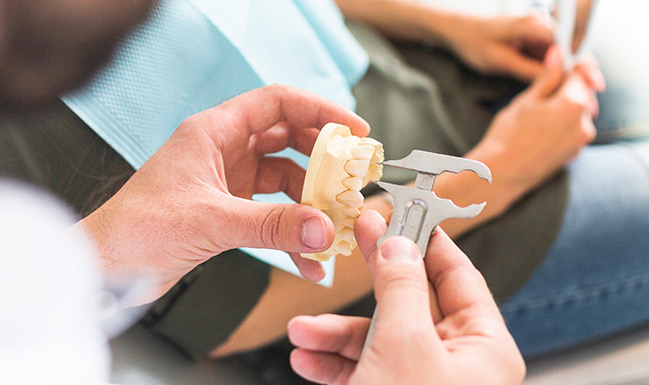
TMJ is short for ‘temporo-mandibular joint.’ This is the joint connecting your lower jaw to your skull. If your teeth do not fit together properly, or there is an imbalance between the location of your bite and your jaw joints’ resting position, problems might occur. These problems are called ‘occlusal’ problems (or ‘TMJ problems’).
These problems can be seen on the teeth, gums, temporo-mandibular joint or the muscles that move the jaw:
Teeth
Teeth that are out of alignment, heavily worn (from clenching and grinding) or constantly breaking, may all be signs of occlusal problems. Your teeth may also be tender to bite or may ache constantly.
Gums
Loose teeth or receding gums can be made worse by an incorrect bite.
Muscles
If your jaw is slightly misaligned, the muscles that move the jaw have to work a lot harder and can get tired. This can lead to muscle spasm. The main symptoms are continual headaches or migraine; pain behind the eyes; sinus pain and pains in the neck and shoulders. Sometimes even the back muscles are can intervene.
Many people have imperfect occlusion and missing teeth, yet never have symptoms because they adapt to these issues. Occasionally, symptoms may appear and then disappear again. A sure sign of ‘occlusal’ problems are grinding or clenching of the teeth. Nine out of ten people who grind aren’t aware of it, but your dentist should be able to see the signs on your teeth.
Dr Charl du Toit has a special interest in treating TMJ problems. He is a member of the ‘British Society of Occlusal Studies’. www.bsos.org.uk
